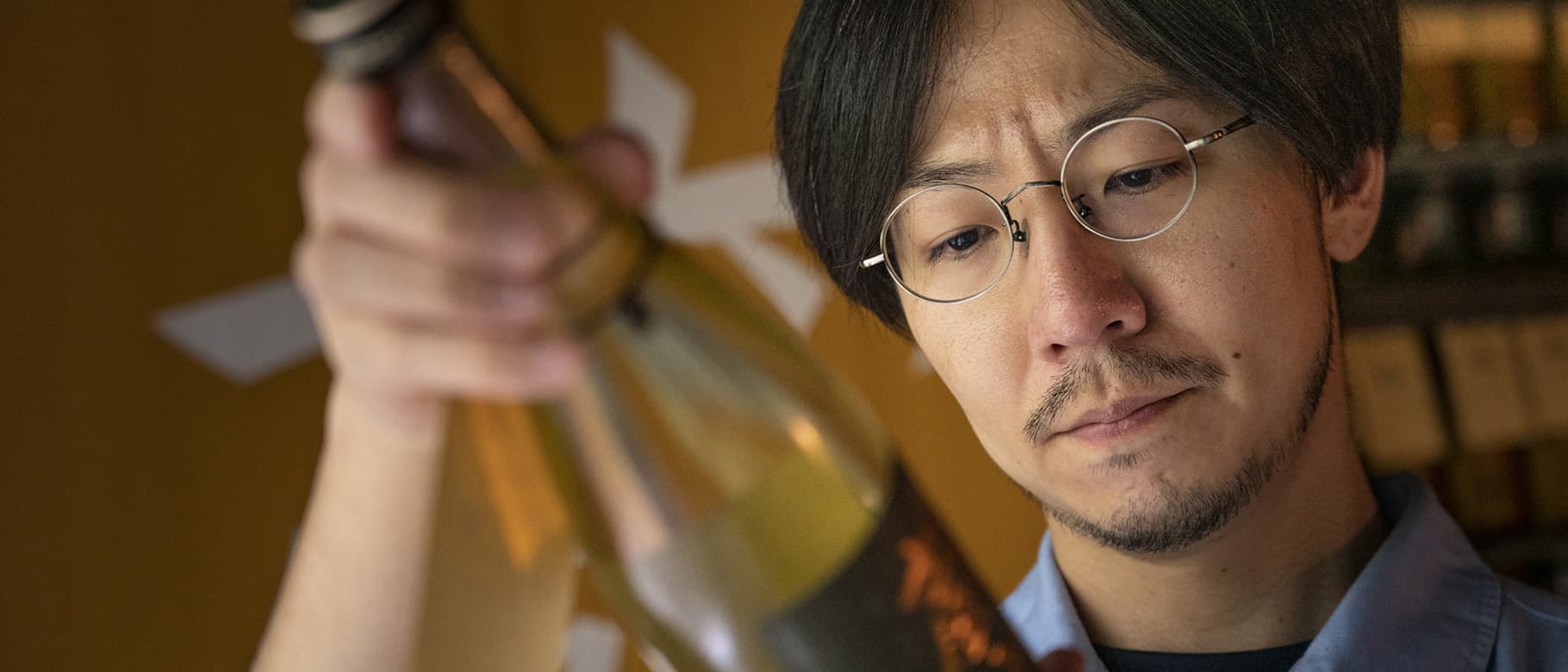

Ozawa Shuzo, founded in 1702, is located in Okutama, which abounds with natural beauty despite being located in the Tokyo metropolitan area. Sawanoi, the brand name was originally named after the location of Sawai area, which is known for its clear water. Ozawa Shuzo has a history dating back more than 300 years and has been loved by the locals as the brewery of Tokyo’s Okutama sake, and also the oldest sake brewery in the region of Tokyo.
Okutama, with its lush forests and mountain surroundings, is about an hour and a half drive from Tokyo on the Metropolitan Expressway. Here in the Sawai area, where the Tamagawa River courses swiftly through the Mitake-Keikoku Valley, Ozawa Shuzo Co., Ltd. has carved history ever since its founding.
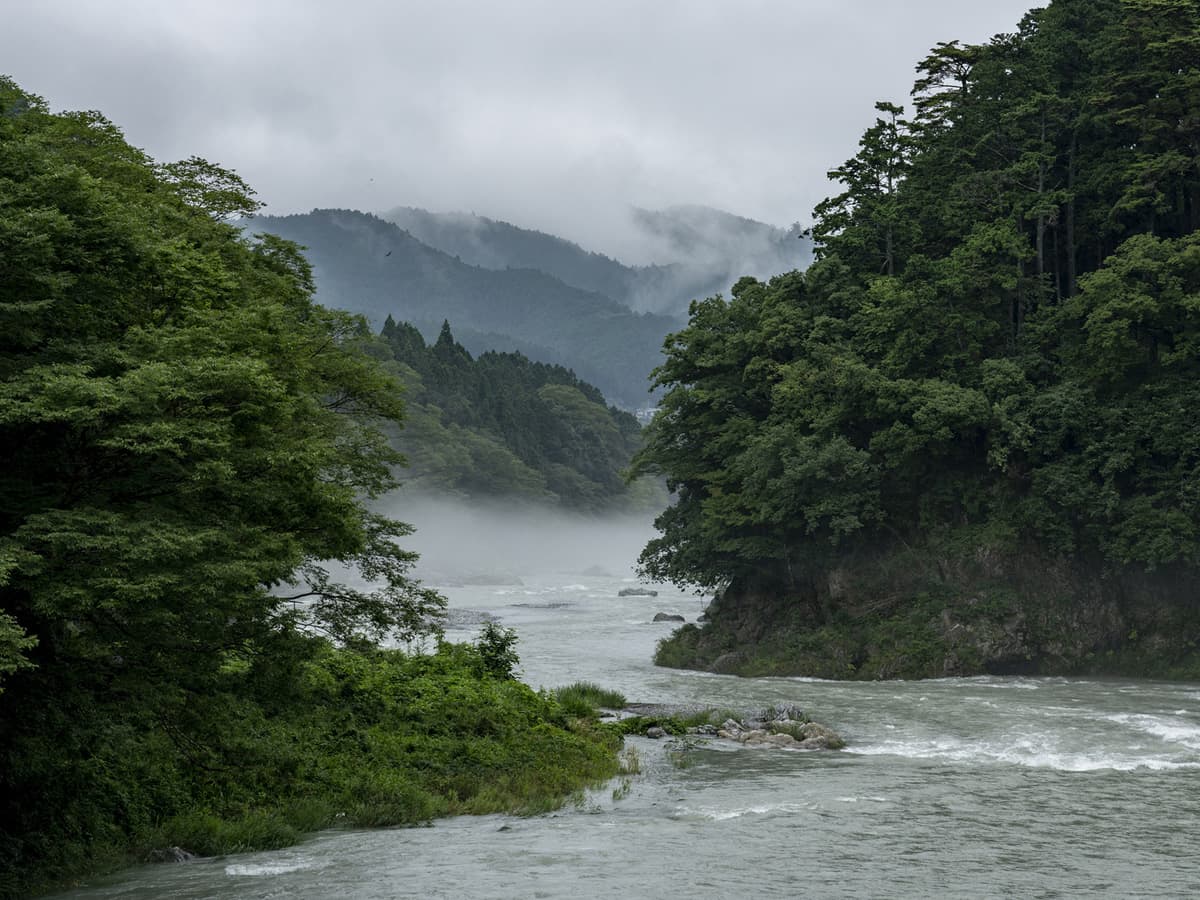
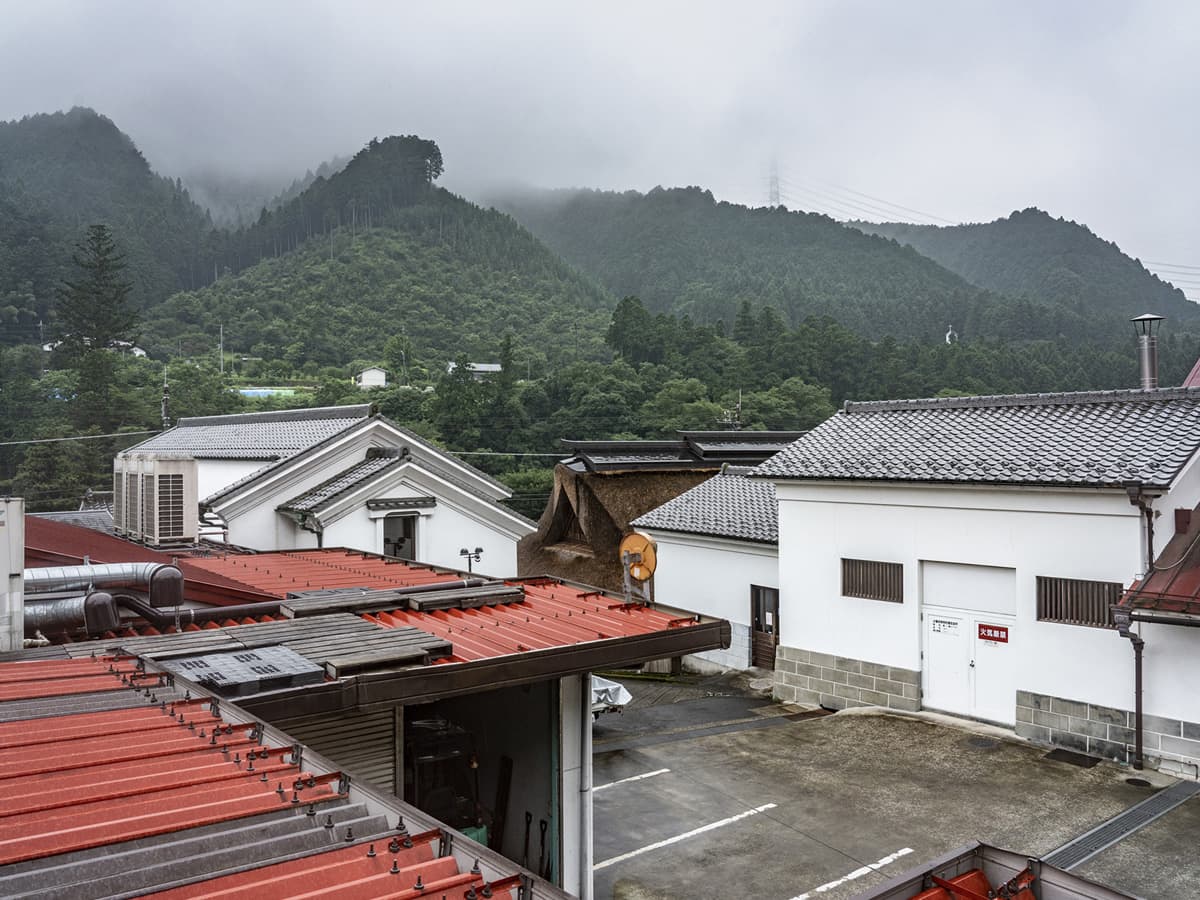
To the left beyond the gate upon which the company nameplate hangs is the thatched-roof house of the Ozawa family. Extending along the right is a white-walled kura: a traditional storehouse cum brewery in which sake is made, matured, bottled, and stored. At the end stands another kura, named Genrokuzo. The kura and house were built in the Genroku era and have been part of a history of sake brewing that has spanned generations.
Visitors are greeted by a sakabayashi – a decorative ball made of cedar branches – suspended majestically from Genrokuzo’s eaves. Cedar is indispensable to brewing sake. Every year the sakabayashi is infused with prayers to the gods of sake brewing to ensure good sake. When a new sakabayashi is hung, everyone knows that new sake has been finished.
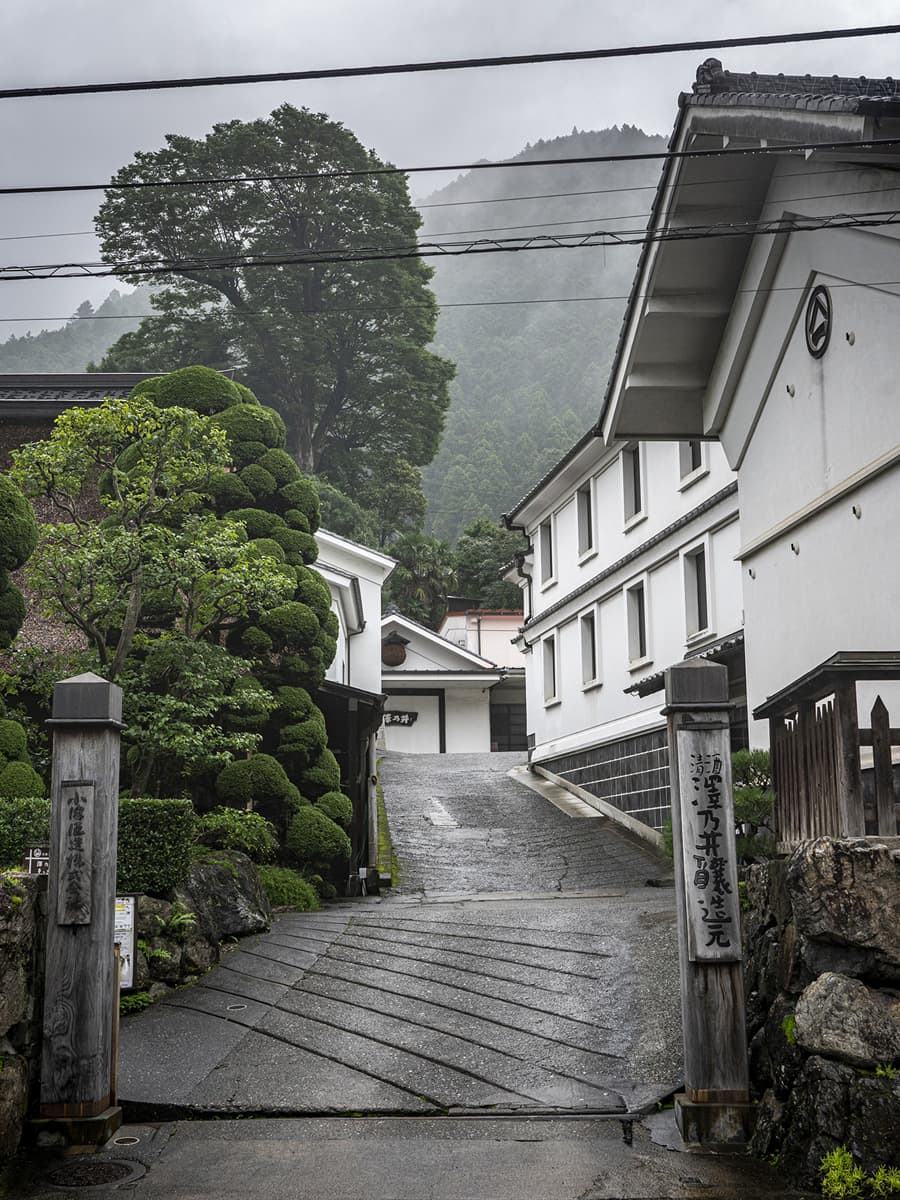
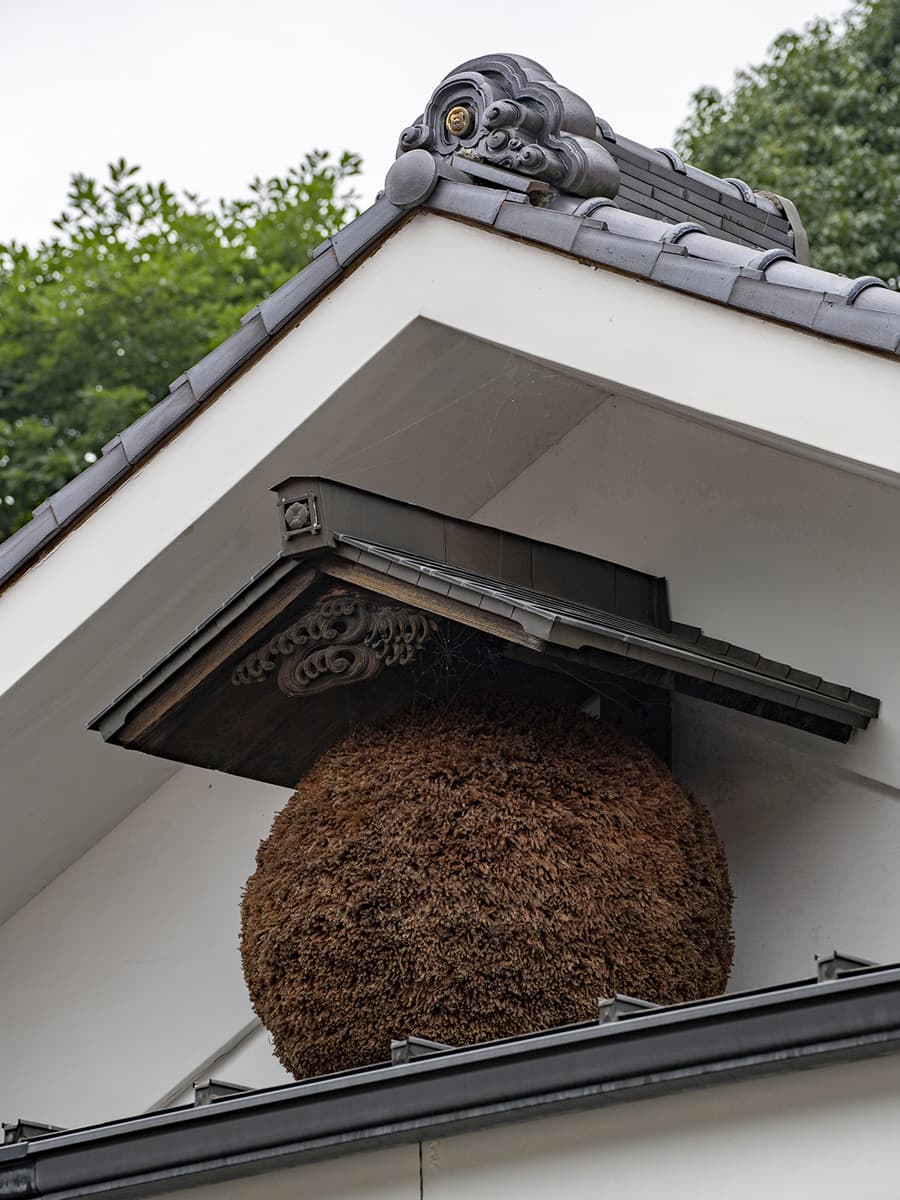
Born in 1984, Mikio Ozawa succeeded his father – 22nd generation head Junichiro Ozawa – in 2019 to become the 23rd generation head of the brewery.
“Socially, the sake industry is traditional, with many breweries called sakagura [‘sake’ plus ‘kura’]. They always use the traditional method of brewing sake in a kura and still have the head succeed to the name. I have three sisters, so as the first and only son, it’s a world in which it’s natural for me to be the successor. As I was born and raised here, I knew from when I was little that I was going to take over. Every day since I was a child I have greeted the employees (and received candy from them). They’ve been around them since I was born. Even now that I’m president, they’re still here, which is really gratifying. To me, this is both my company and my family.”
“In the sake industry, it’s common for the first son born into a brewery to major in brewing at an agricultural university and then join a different company in the industry after graduating. ‘You can learn as much about zymurgy as you want here at home. Why not study something else?’ my father recommended, so I studied business administration. I graduated in 2008 and worked for five years in the accounting division of a food company. In 2013 I joined our company and learned how to brew sake.”
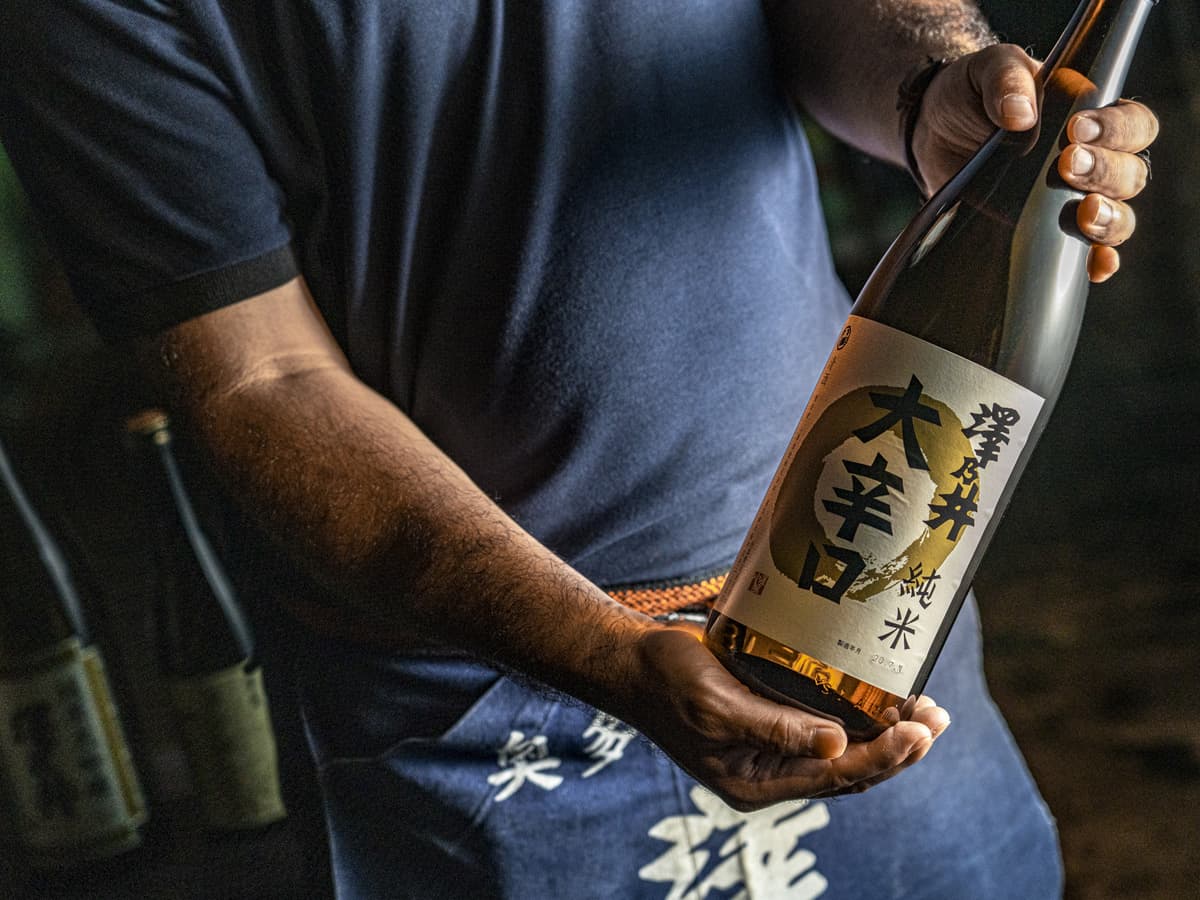
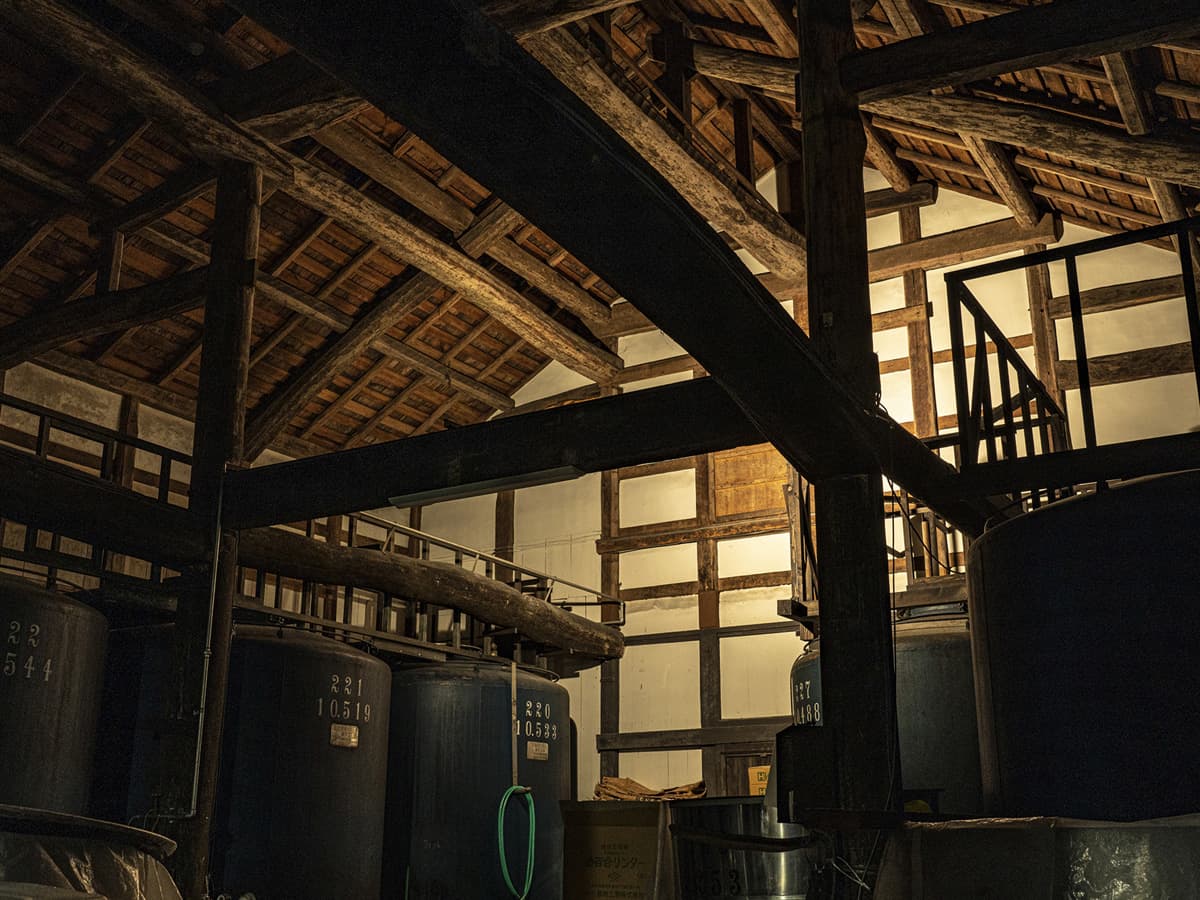
“Becoming head of the brewery was something that happened sooner than I expected. A family business has its upside and downside. My father is concerned about the downside, so he doesn’t interfere at all. He’s letting me spread my wings at present. As for the upside, being father and son makes communication easier. We both know when to back off, and we’re able to get on the same wavelength. Also, my father preceded me as the proprietor, so I seek his advice about critical aspects. I think we get along really well.”
“In interviews, I’m often asked what I’d like to change during my time as head, but I’m not comfortable with change; I prefer sublimation. I’m the 23rd generation, but my grandfather, who was the 21st generation, launched sake brewery tours. He was the one who created the business model for kura sightseeing, using tourism to showcase the appeal of sake. My father, who is the 22nd generation, strove to improve sake quality. He took Sawanoi higher by employing chief brewers for the work that independent brewers associations are usually in charge of.”
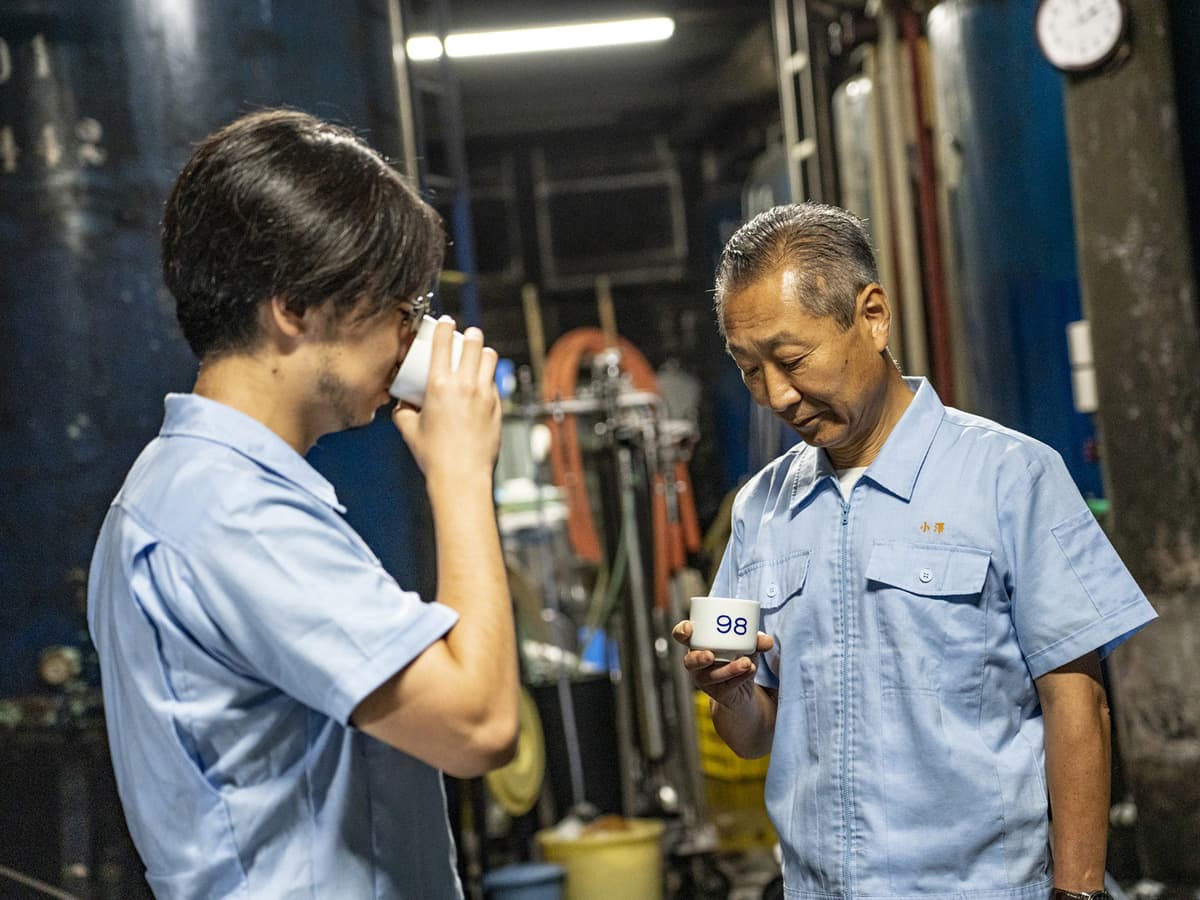
In 1995 Ozawa Shuzo began making vintage sake for Kuramori, an aged sake. Its oldest vintage is currently 2001. Although sake doesn’t generally involve long-term aging, Kuramori conveys the sake tradition of the Edo era, which included aged sake. It’s a good example of one of the many kinds of sake highly regarded for taking inexpensive, everyday sake and adding value to it. Kuramori has won numerous awards, including a Platinum Award in 2018 at Kura Master, which is an international competition held in Paris, and an award in 2020 at Zenkoku Shinshu Kanpyokai (National New Sake Appraising and Deliberating Fair), which has been held since 1911.
“The difficulty in making sake is reproducibility. Japanese people buy Sawanoi’s Daikarakuchi [Super Dry] because it’s delicious. It’s unacceptable for the taste to change after they’ve bought it. The character of wine changes every year, so there doesn’t seem to be the same demand for uniform reproducibility with sake. It might be high strung, but I think some of this [kind of demand] is just innate: to Japanese people, sake should be stable and always taste the same. The Japanese market is strict on quality control, so to make sake that satisfies it means that the sake will always taste the same, owing to stable high quality. But the bar is set high for us because we’re not only dealing with natural ingredients — water and rice– but also the fermentation process, which is ambiguous. Sake makers really struggle with the fact that people just assume that sake should always taste the same.”
The making of sake begins with polishing the basic ingredient: brown rice. The surface of rice contains proteins, lipids, and other elements that can give sake an off-taste. A major factor that determines the taste of sake is the rice polishing ratio: the ratio that remains when the outer layer of the rice is shaved off.
Under liquor tax law, the rice polishing ratio has been set at 50 per cent for Daiginjo-shu, the highest grade, and 60 per cent for Ginjo-shu. The lower the rice polishing ratio, the more the outer layer of the rice has been shaved off, resulting in a refined and luxurious flavour.
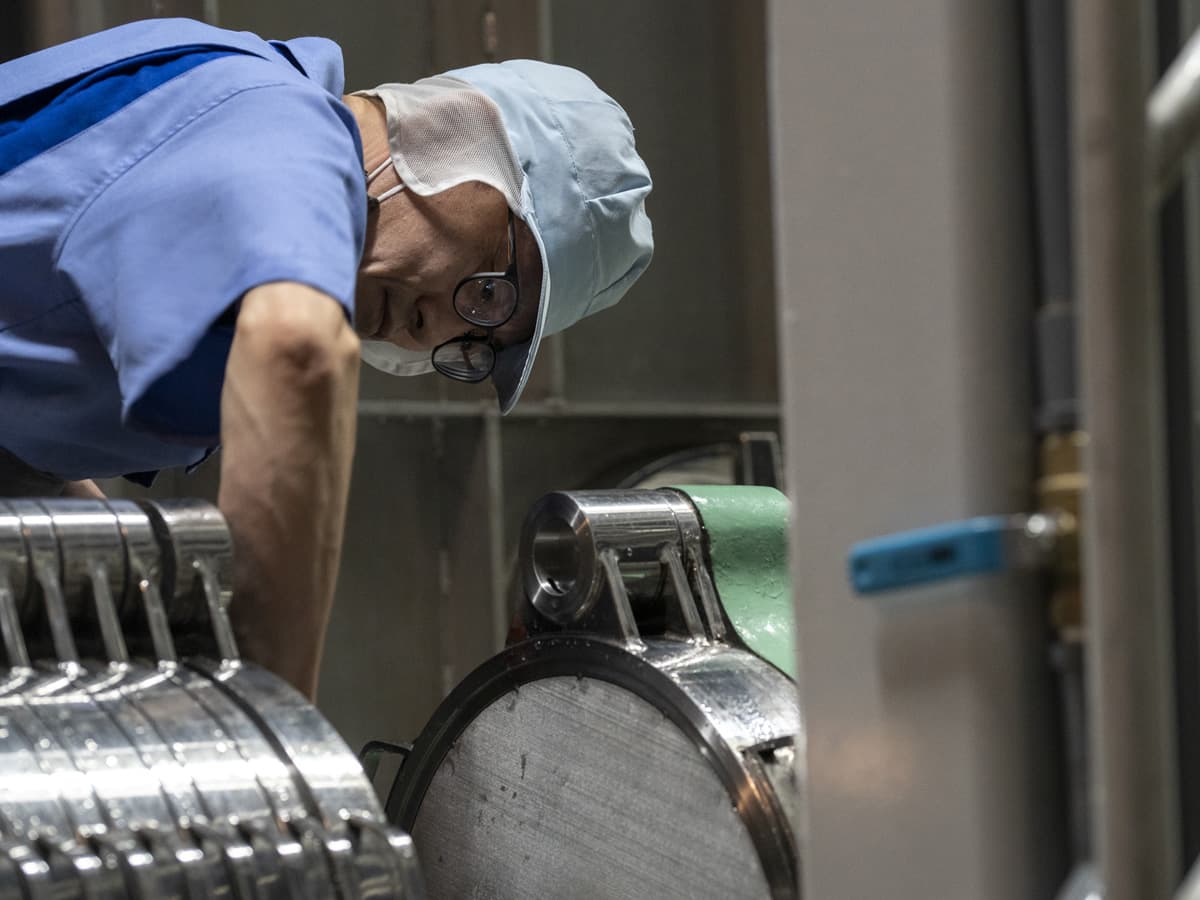
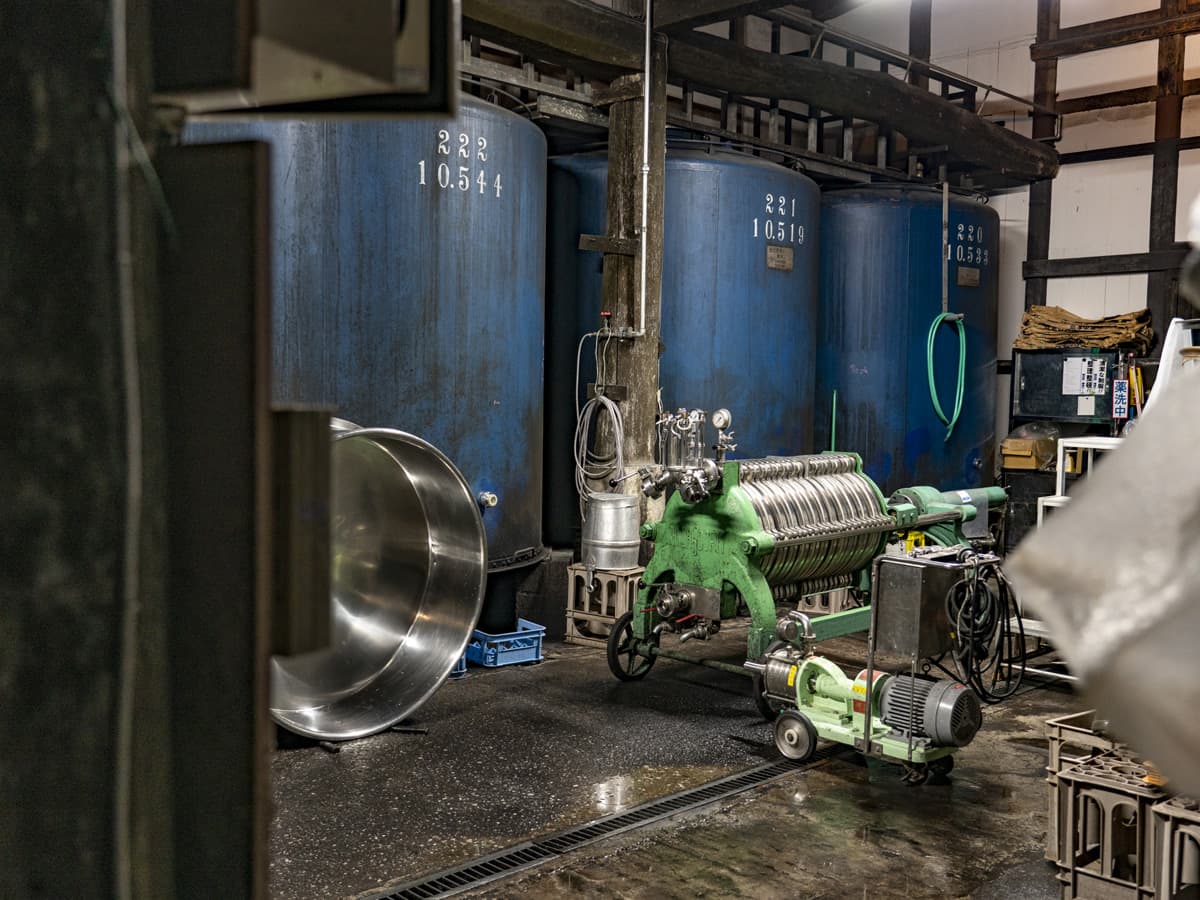
“From the standpoint of both management and sake quality, balance is crucial. Take Daiginjo. Even if good sake is considered to be highly aromatic, it’s not simply a matter of extracting maximum aroma. If sweetness and well-rounded flavour are the standards, how do you determine what level is best? There are no absolute right answers beyond one’s preferences, but there’s always a place for striking an exquisite balance of these aspects. Achieving good balance is crucial for people dealing in luxury food and drink.”
Sake is basically made from rice, water, and malt. Polished rice is washed, soaked in water, and steamed. Koji mould spores are added to the steamed rice, which is allowed to ferment, producing koji. Next, the water and koji are mixed. Yeast mash is made by adding yeast, lactic acid, and steamed rice. Next, koji, steamed rice, and water are added to the yeast mash, which is allowed to ferment. The mixture is then strained, yielding undiluted sake.
“In brewing sake, water is crucial. In Tokyo, the capital of Japan, it’s a matter of how much quality water you can get. We use two different types of spring water, depending on the composition: medium hard water, from a horizontal well behind the brewery, and soft water, from a mountain well. It’s a definite advantage to have water nearby that is so famous that a brand – Sawanoi – was named for it.”
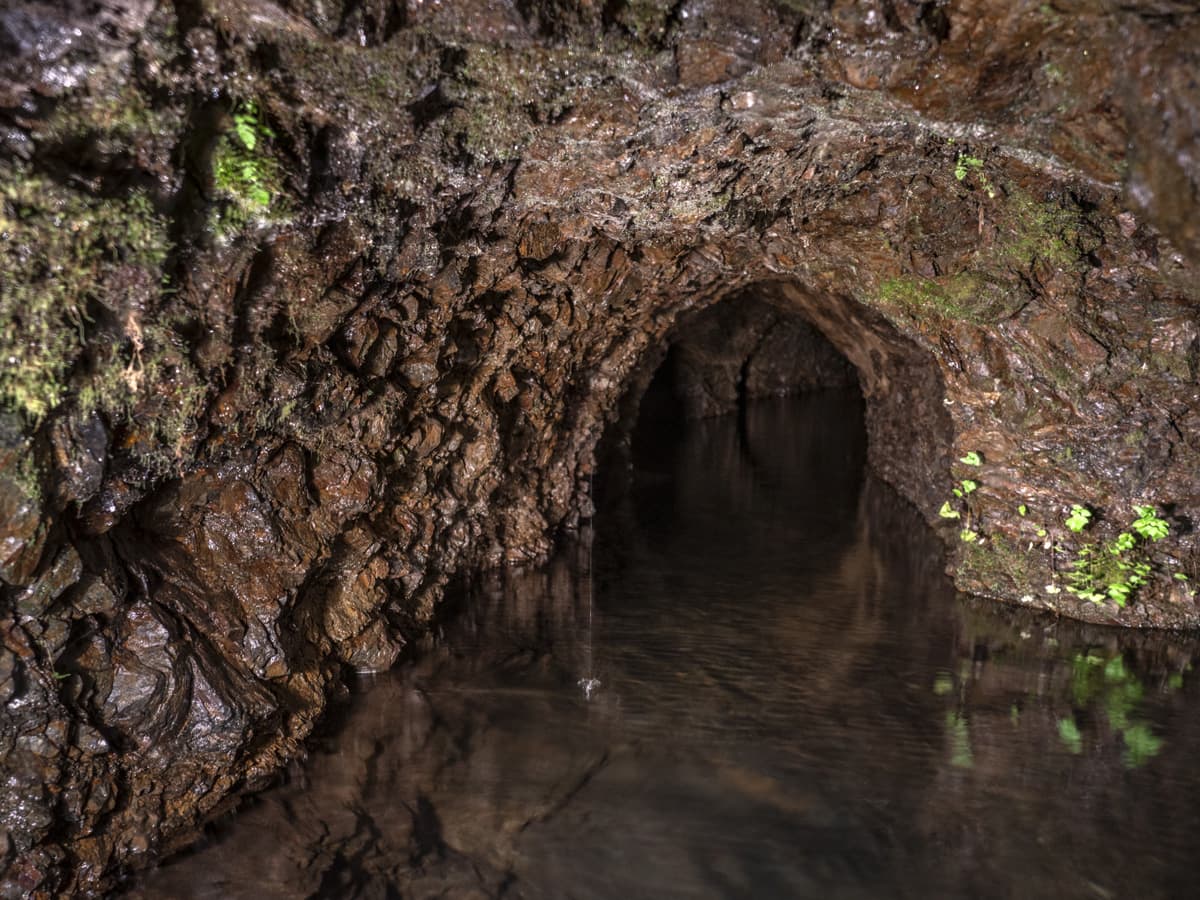
“Acidity is definitely present in our sake; rather than being light and airy, it has a solid flavour. Instead of being a heavy sake that is only savoury, it has a nicely sharp aftertaste. After the fullness comes the sharp edge, which rounds it out beautifully, while bringing out the acidity. Balance is also important to the flavour of sake.”
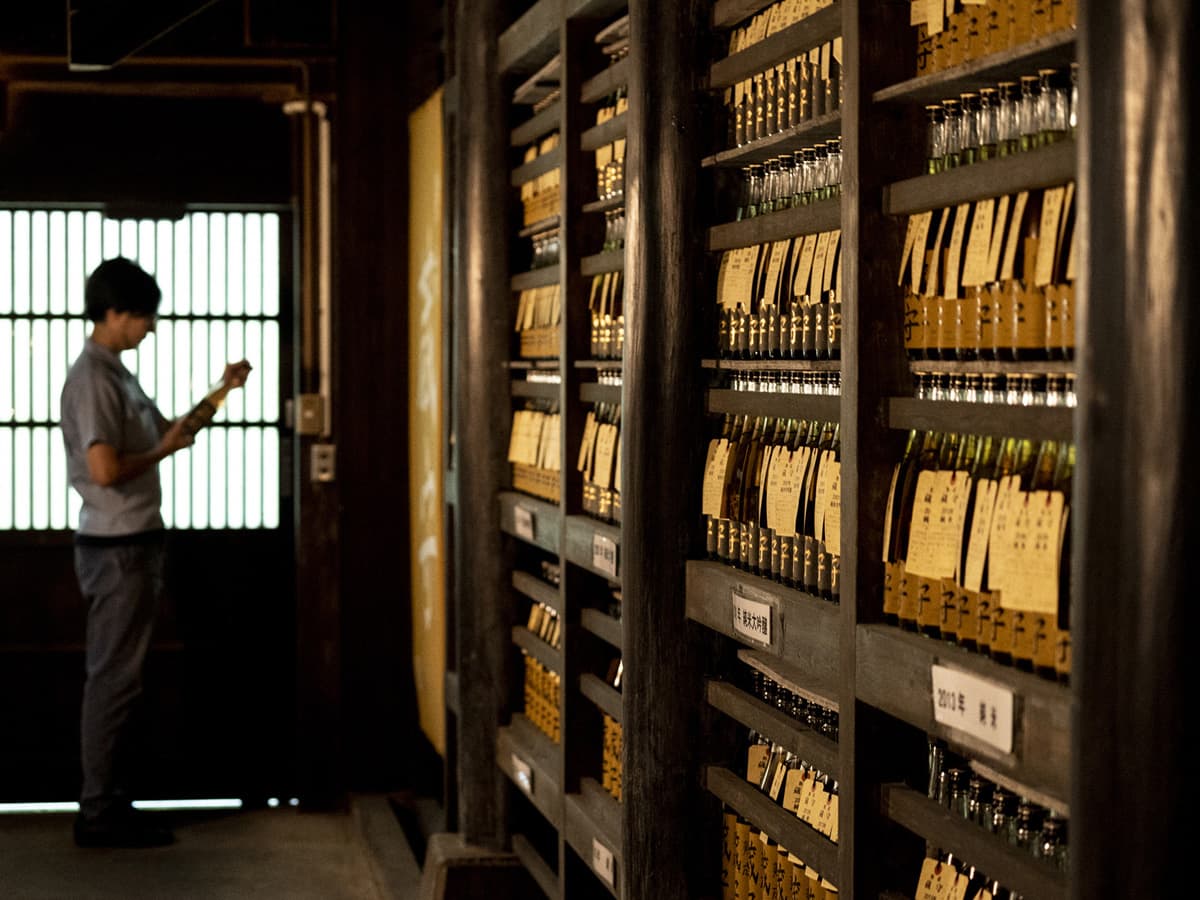
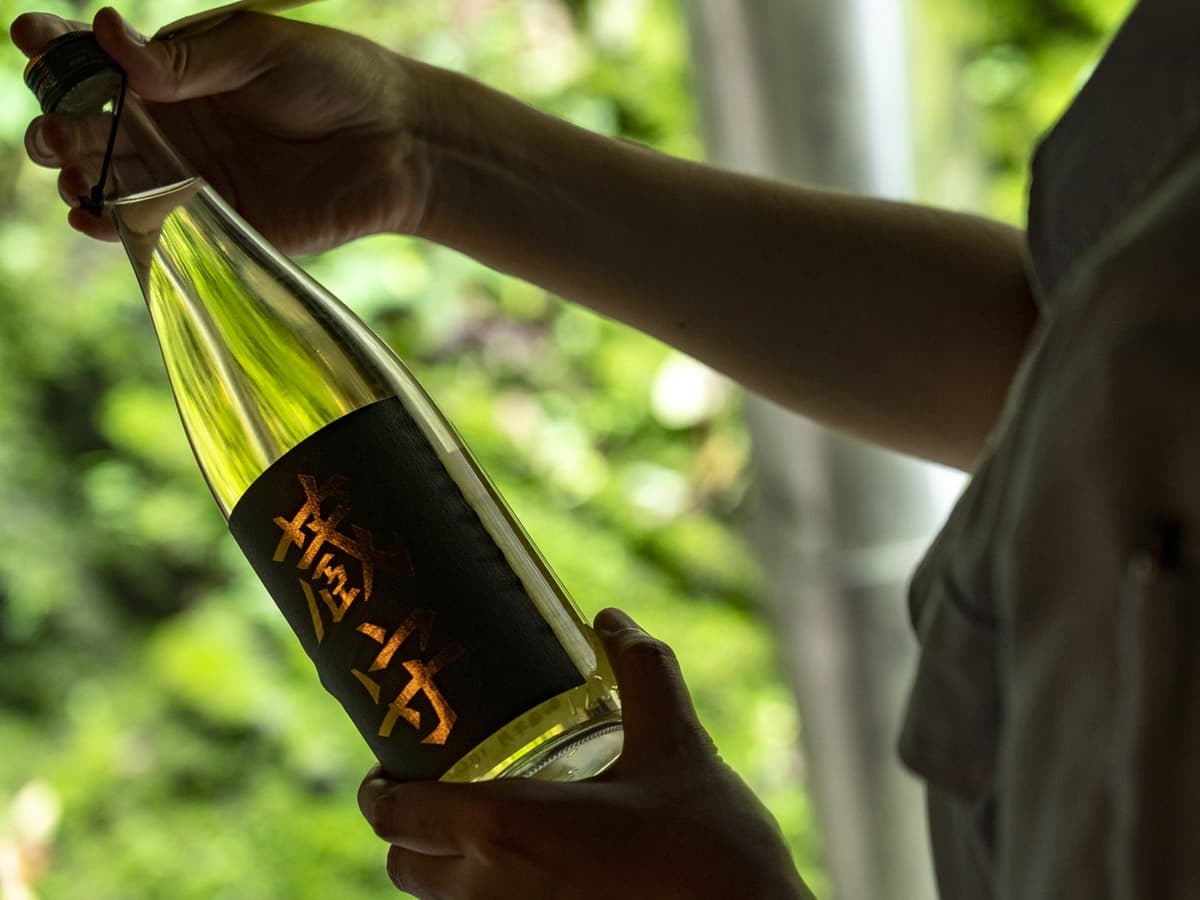
In the process of making yeast mash, lactobacilli living in the brewery are introduced, yielding kimoto seed mash. Compared with the sokujo seed mash normally used, in which already produced lactic acid is added, kimoto seed mash made with live yeast from the kura brewery (the actual building) brings out the maximum taste of the rice, resulting in a more complex and delicate flavour.
“Making kimoto seed mash is the opposite challenge of achieving stability. In addition to being extremely time-consuming, it’s also technically difficult. At our brewery, we have been doing this for generation after generation. If we stop, this technical inheritance will come to an end. Making kimoto seed mash is not only important from a technical standpoint, as brewers, but also for cultivating the spirit and reflecting on the manufacturing process. Even if some things don’t sell, we must continue on as a sake brewery.”
“We have several products made with kimoto seed mash. Genroku, which is made just with rice, is a junmai-shu [pure sake, with no added brewer’s alcohol]. The rice isn’t polished, and the seed mash is our traditional kimoto, with a polished rice ratio of 90 per cent. In contrast, Tokyo Kurabito, which won a Platinum Award at Kura Master, is a junmai ginjo-shu [pure-rice sake, with no additives]. The rice is shaved to a polishing ratio of 55 per cent, and the bacteria used are specialised to produce a fruity aroma and sweetness for ginjo. Tokyo Kurabito is a sake that embodies discovering the new by learning from the past: we use the complex acid production that characterises kimoto and then cross the contemporary brewing technology for making ginjo with the traditional method of making kimoto. Although the demand for sake of stable high quality has been a constant, the taste of kimoto seed mash differs every year. The market allows this because kimoto is a traditional manufacturing method. I hope it leads to opportunities for creating new value for vintage sake.”
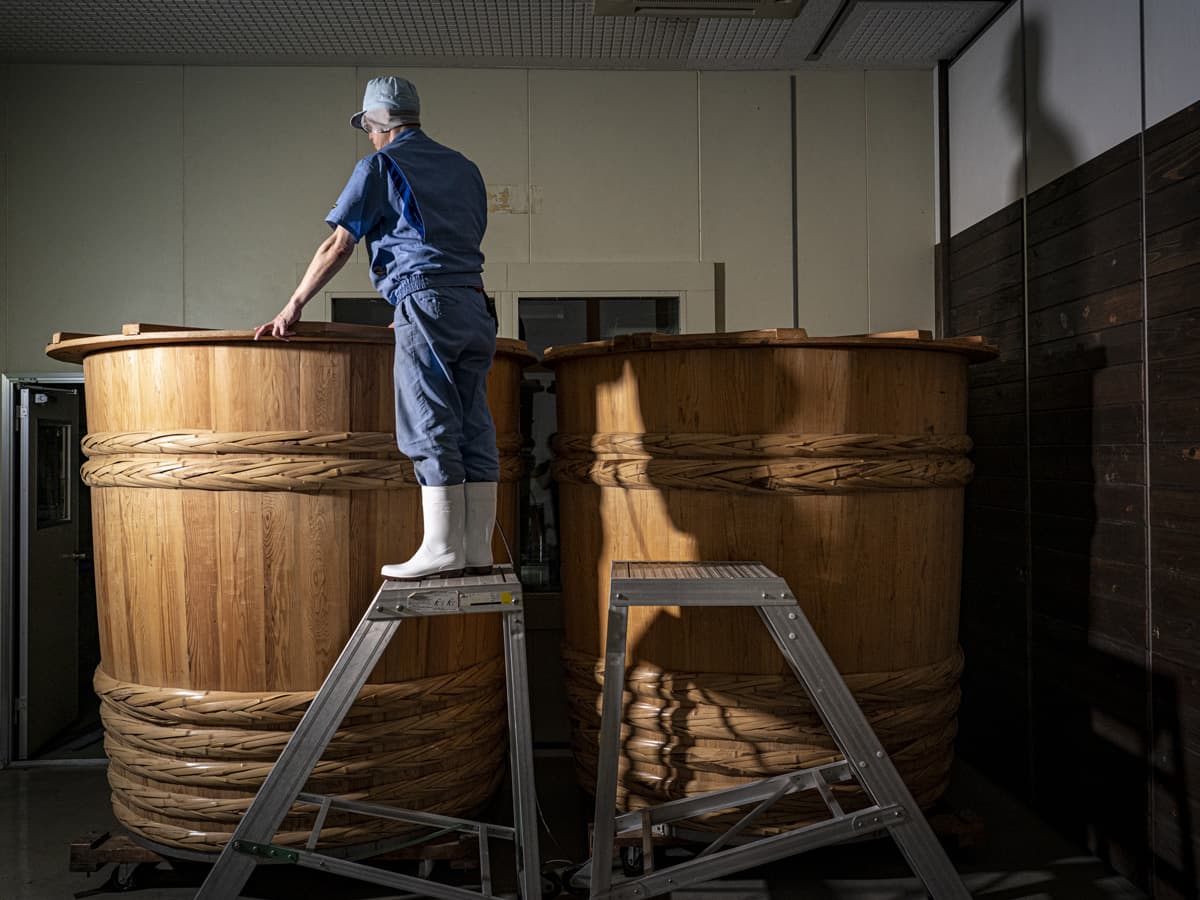
“This giant wooden barrel was made 17 years ago. We use it for Iroha, a kioke jikomi [wooden barrel-brewed] sake made using an ancient method. A 300-year-old cedar tree behind the kura began to wither. We had to cut it down, so we decided to have a wooden barrel made from it. There are fewer craftsmen who make them now. After hunting around, we were able to order one from a craftsman in Osaka.”
“With kioke jikomi, microorganisms breathe through the wood and settle into the bark, producing a complex taste regular sake doesn’t have. This rich sake has a rice polishing ratio of 65 per cent and just the right amount of acidity.”
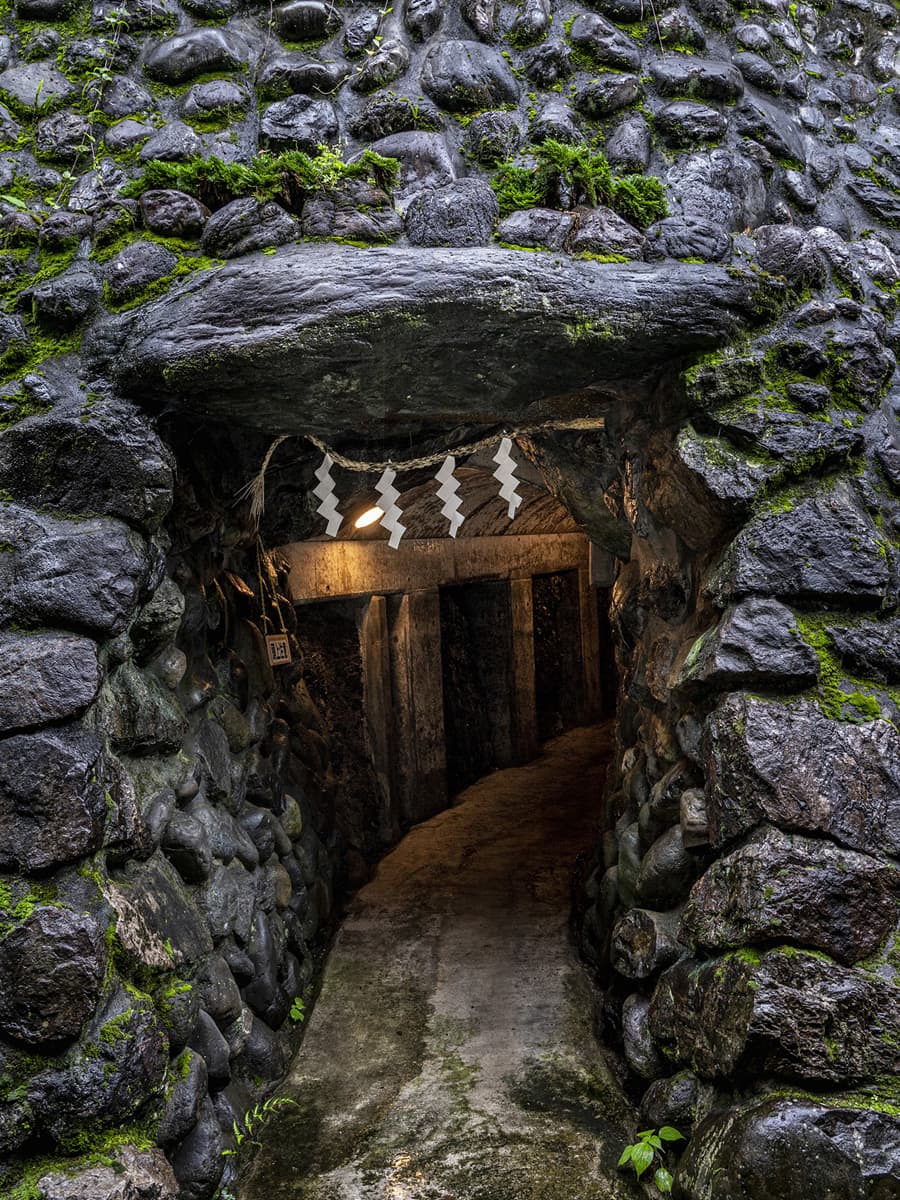
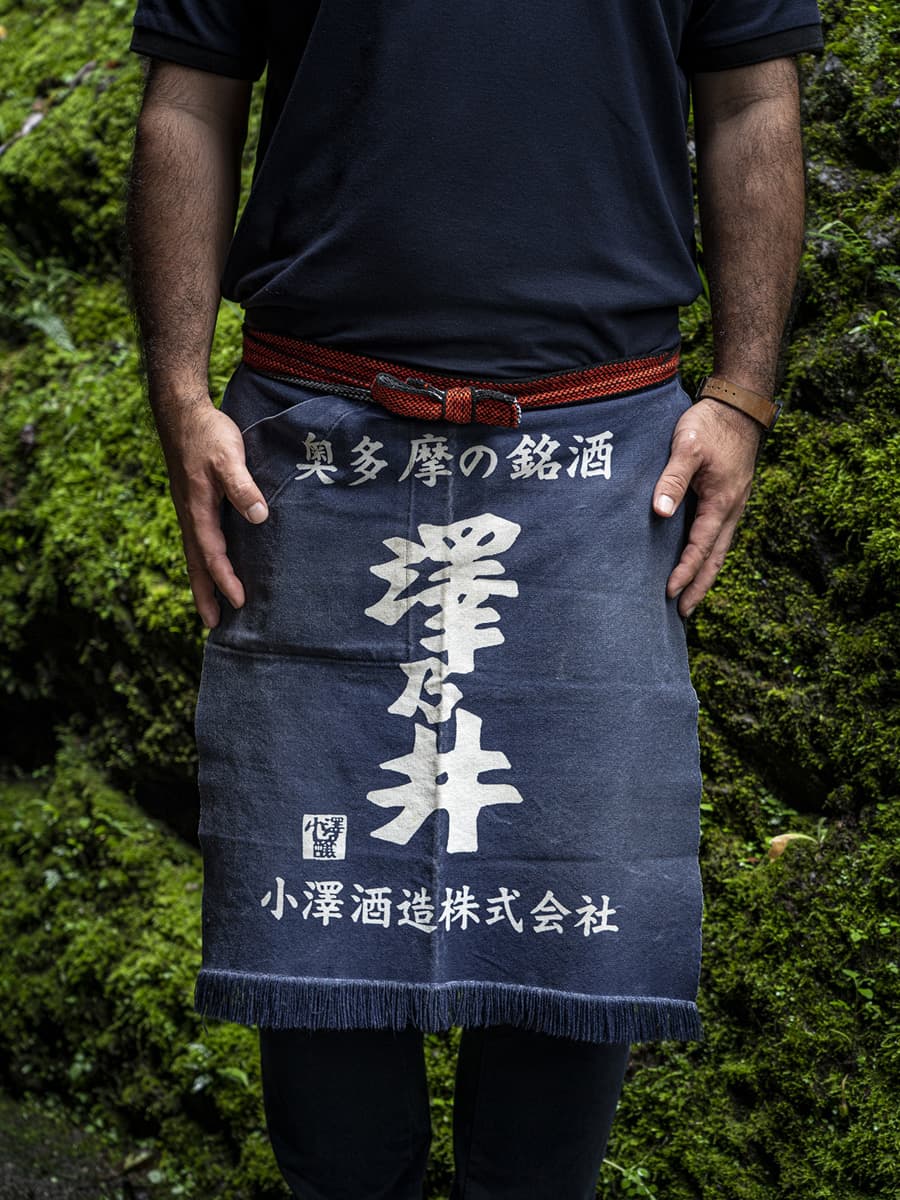
“We challenge ourselves with various ways to make sake because, in a word, we love sake. Everyone here loves sake. We sell a lot to our own employees. When we drink sake, it makes us want to sample other kinds. And then we want to try making them. Referencing Edo era literature inspires us to make new things. We’re led by our curiosity and a spirit of challenge.”
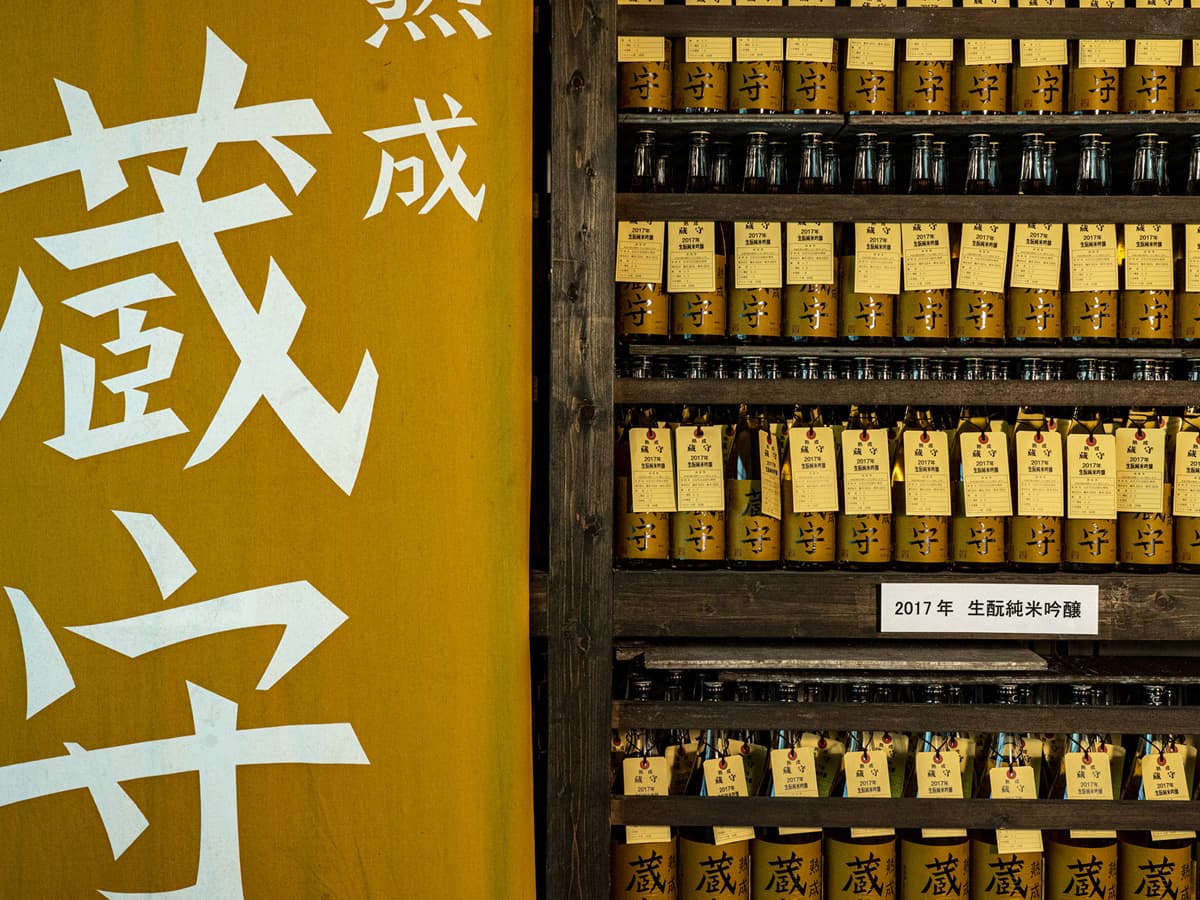
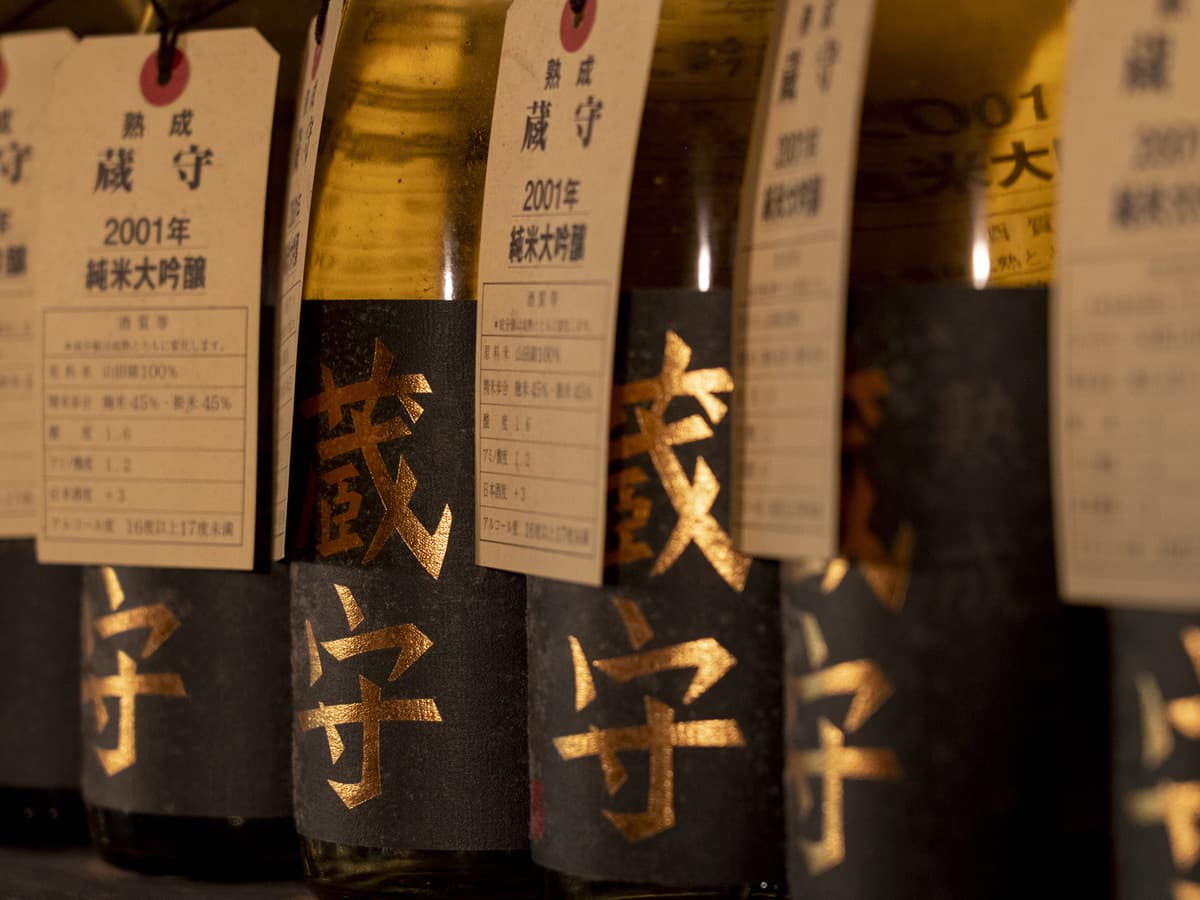
“In making sake, the rice, water, and people are very important. Traditionally, independent brewers associations are responsible for brewing, but our 11 brewers are all full-time employees. Winter is the busy season for brewing, so in summer our brewers all clean the kura. No matter how big the machinery, it’s gone over with a single brush so that even the gaps between the screws are thoroughly polished. We’re confident in how clean our kura is.”
“Our brewers aren’t doing anything special; they’re just doing what’s natural. In a natural way. Every day. Performance-wise, they’re giving 120 per cent. Rather than just doing their jobs, they’re aiming for the ultimate in the ambiguous world of sake making. I can tell from how they work that they think this way even as individuals, and I watch them with confidence.”
“Nobody quits because it’s tough. We have a total of around 80 employees, most of whom want to make Sawanoi even better. People who join the company just to get paid for doing a job end up quitting because they don’t feel comfortable here. There’s such solidarity among the employees that when that happens, they can be heard to say, ‘Mizu ni awanai [The water didn’t suit them]’. As president, I have absolute faith in the sake that we’re all making together.”
Learn more about Sawanoi Sake at sawanoi-sake.com
(Photography by Daisuke Akita)
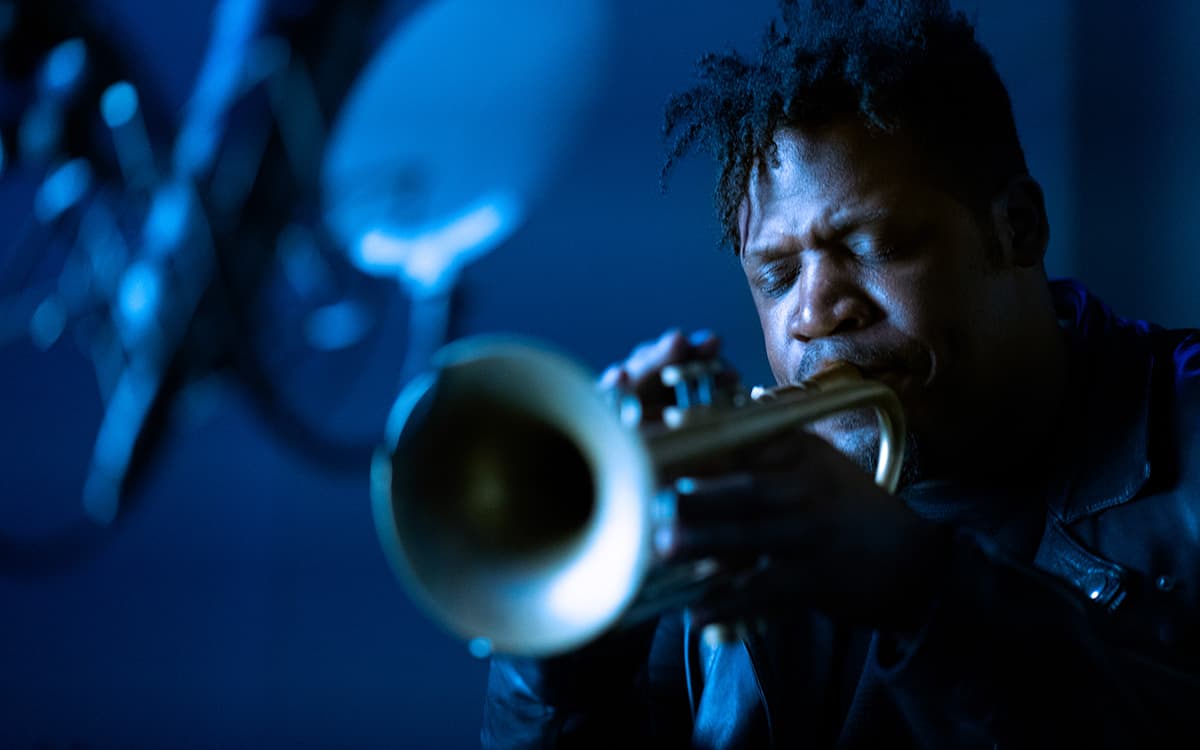
Bold as brass

Thomas Sandell: Designed for life
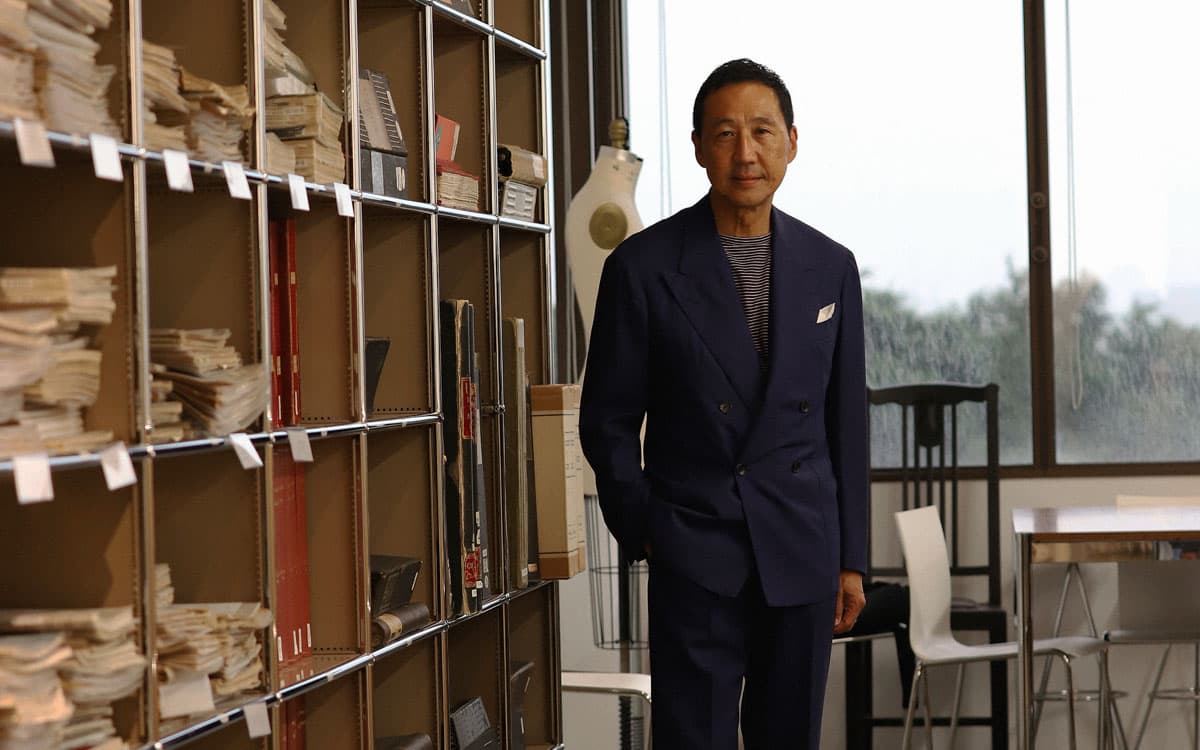
Yasuto Kamoshita’s archive shirts collection
Cotonificio Albini S.p.A. - Via Dr. Silvio Albini 1, 24021 Albino (BG) – Italy
Società con unico socio - diretta e coordinata da Albini Group S.p.A.
P.I. 01884530161 - C.F. 08743540158 - Iscritta al Registro Imprese di Bergamo - REA 244649
Capitale sociale sottoscritto e versato € 11.170.960